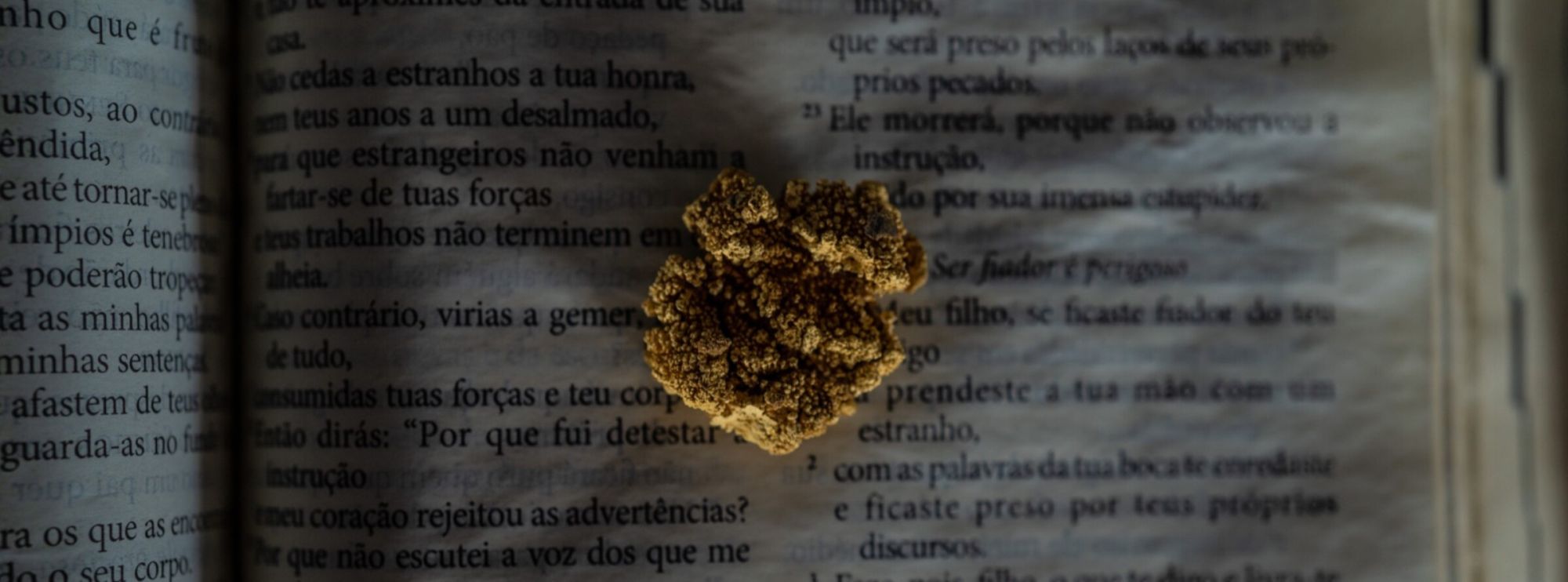2023 was a game-changer for the Brazilian gold industry. Luiz Inácio Lula da Silva took office as president with the promise to put Brazil’s environmental policy back on track again after four years of Jair Bolsonaro’s pro-illegal mining administration. The repercussions of the humanitarian crisis in the Yanomami Indigenous
Territory, with images of severely malnourished Indigenous broadcast all over the world, increased the pressure on authorities to put a halt on the production and trade of illegal gold. The territory, which straddles the states of Roraima and Amazonas, had been invaded by thousands of illegal miners, who spread disease and contaminated with mercury the rivers that the Indigenous inhabitants depended on.
The perfect storm set into motion a series of responses. The Federal Police created a department exclusively to investigate environmental crimes, which carried out the equivalent of one raid per week against illegal miners in 2023.
From January to September, the federal environmental agency, IBAMA, seized or destroyed 1,997 mining machines in on-the-ground operations, including backhoes and dredgers used by illegal miners to scour the riverbed for gold-bearing sediment.
In July, the federal government mandated the use of electronic invoices for gold trading; until then, trade records were largely drawn up by hand. One month later, the central bank complied with a Supreme Court decision to end the “good faith” concept that had exempted DTVMs, the only financial companies authorized to trade gold in Brazil, from verifying the origin of the metal.
That law, now overturned, had left the door open for gold illegally mined from protected areas and Indigenous lands to be laundered into the legitimate supply chain, simply on the basis that the seller was acting in “good faith” when declaring that their gold had legal provenance.
A report by the Federal University of Minas Gerais (UFMG), however, showed that 30% of the gold mined in Brazil from January 2021 to June 2022 could be considered illegal or of questionable provenance.
“It was so easy to get illegal gold into the formal market that it was worth it,” Larissa Rodrigues, a researcher and portfolio manager at the Escolhas Institute, which studies sustainable development issues, said.
“If you take the gold from an Indigenous land [where mining is forbidden] and sell it directly to a DTVM, it’s wonderful because you get your money right away — you get rid of that gold, you don’t have to deal with exporting or logistics.”
With the Supreme Court declaring the “good faith” law unconstitutional, DTVMs must now do their due diligence to ensure the origin of the gold they buy.
DTVMs were also targeted by the Brazilian securities and exchange commission, which started an investigation against five institutions suspected of buying gold from illegal mines. In September, the Federal Police launched a raid against these companies.
“In the last year, we’ve made much more progress than in the last 10 years,” Rodrigues said.
All these measures targeted gold from garimpos, a simplified mining practice which isn’t subject to the same stringent environmental requirements as large-scale commercial mines. The original legislation undergirding garimpos was aimed at supporting garimpeiros, artisanal miners who explored small areas with rudimentary instruments. Today, however, garimpeiros are armed with expensive machinery and explore large areas, leaving behind a devastating environmental impact.
“We’re talking about millions of reais in initial investment, equipment that includes backhoes and dredges that can reach 4 million reais [US$ 782,000]. Today, a garimpo is practically an industrial process,” Rodrigo Bellezoni, from UFMG’s Remote Sensing Center, said.
According to the latest Brazilian Mining Yearbook, in 2021 garimpos accounted for 34% of the country’s gold production. Despite being a legal activity, loose regulations open the way for a raft of socioenvironmental impacts, from river contamination to illegal deforestation and slave labor.
But 2023’s federal action had effects both on the ground and on numbers. According to MapBiomas, a Brazilian research collective that tracks land-use changes through satellite imagery, deforestation caused by garimpos in the Amazon Rainforest fell to 3,009 hectares (7,435 acres) in 2023 from 5,332 hectares (13,176 acres) the previous year, or a drop of 43%.
Official data also reveal a change in the gold trade. According to the National Mining Agency, the amount of tax collected from the gold trade in Pará state, which has the largest gold production from garimpos, dropped by 51.7% in 2023 from 2022, to 36.2 million reais ($7.1 million).
That trend has since intensified. From January to March 2024, tax from the gold trade plunged by 81.5% in the state, compared with the same period in 2023. The Pará municipality of Itaituba, Brazil’s largest illegal mining hub, saw a 92.5% reduction during this period.
“This caused a halt like never before in the region,” Lucas Pavarina, who previously worked for several years in the gold trade in Itaituba, said. Pavarina is now the president of the Tapajós Mineral Development Institute, which advocates for greater sustainability in the trade.
“The number of excavators has dropped a lot because many machines have been burned, paralyzed. The way the raids were carried out achieved their objective, which was, if not to paralyze all activity, to greatly reduce it.”
Brazilian gold exports have also been impacted, with a reduction of almost 20% in 2023 according to local news outlet Valor Econômico. The suspension of activities of Brazil’s second-largest gold producer, Anglo Gold, have also impacted those numbers.
“It’s a short time for us to evaluate,” said Rodrigues from the Escolhas Institute. “But this data shows that there has been a shock [in the sector], and now we have to see how this will behave in the coming months.”
Invisible gold
Despite the drop in new garimpos, both researchers and experts on the ground agree that illegal mining is far from over. “The experience of the players involved in this sector tells us that in general they are always one step ahead. Perhaps in the official figures this movement has had a certain impact, but in reality this gold has continued to flow from there to here,” said UFMG’s Bellezoni.
“Everything that was strengthened during the four years of the Bolsonaro government will not disappear overnight,” said Maurício Angelo, founder of the Mining Observatory, an investigative journalism outlet and think tank focused on mining, and researcher at the Center for Sustainable Development at the University of Brasília.
“These people are extremely well capitalized, extremely scattered, we’re talking about billions circulating in the illegal gold trade, with ramifications in criminal associations and on the international market,” he said.
Pavarina, who follows the daily movement of miners in Itaituba, said the gold trade still persists, although on a smaller scale. “The market continues, production continues. The mining areas are huge, I doubt it will stop.”
Judging by the drop reflected in the official data, however, much of this gold is now being traded through less publicly visible channels, including sales to unauthorized buyers. “We don’t know what’s going on. People say that gold has come over the borders. Probably does. But who takes it, how much they make, nobody knows,” Rodrigues said.
One reason for the shift of gold sales away from legal channels is the withdrawal of DTVMs from Pará — there’s currently only one institution authorized by the central bank to operate in the state.
According to Pavarina, a local factor contributed to it. In February 2023, the Federal Prosecutor’s Office recommended the annulment of the environmental licenses issued to gold mines by the Pará state government on the grounds that they were being issued far too easily, with serious impacts on the Tapajós River Basin. The case is still under discussion . But, according to Pavarina, this measure, combined with the end of the “good faith” law, led to legal uncertainty that prompted DTVMs to “take the team off the pitch.”
“When you absent yourself from the market, you make room for those who commit real crimes to expose themselves to risk. That’s what’s happening now,” he said.
Experts said they believe these setbacks don’t cancel the advances made last year in the gold supply chain. “It’s part of the process. It’s normal, in activities with a certain level of illegality, to have this cat-and-mouse game,” Bellezoni said.
“You start to differentiate between those who are in the legal market and those who are in the illegal market, because today everything is mixed up,” Rodrigues said.
Experts say they believe the next step is to give tools to those who want to operate legally, so they can ensure the gold they’re buying comes from legal sources. Three bills are currently in Congress proposing tighter regulation of the gold trade, similar to legislation that’s already been passed to govern the timber and cattle industries.
Among the provisions in the bills is the implementation of a “gold guide,” to keep track of every time gold is moved from one place to another. One way to do this would be to mark each gold nugget with a chemical substance, like silver isotopes, that serves as a unique fingerprint to identify it along the entire supply chain.
“We’re starting to solve the problem,” Rodrigues said. “We now have concrete measures, we’re already seeing a shock in the market, and now we need to move forward with traceability. Because as long as a buyer can’t tell where the gold he’s buying came from, you don’t have traceability.”
This article appeared originally in Mongabay. Read the original article here: https://news.mongabay.com/2024/04/brazils-illegal-gold-trade-takes-a-hammering-but-persists-underground/






